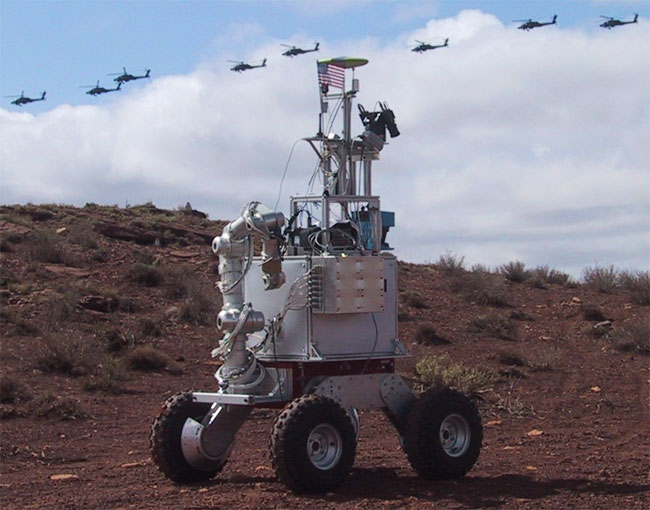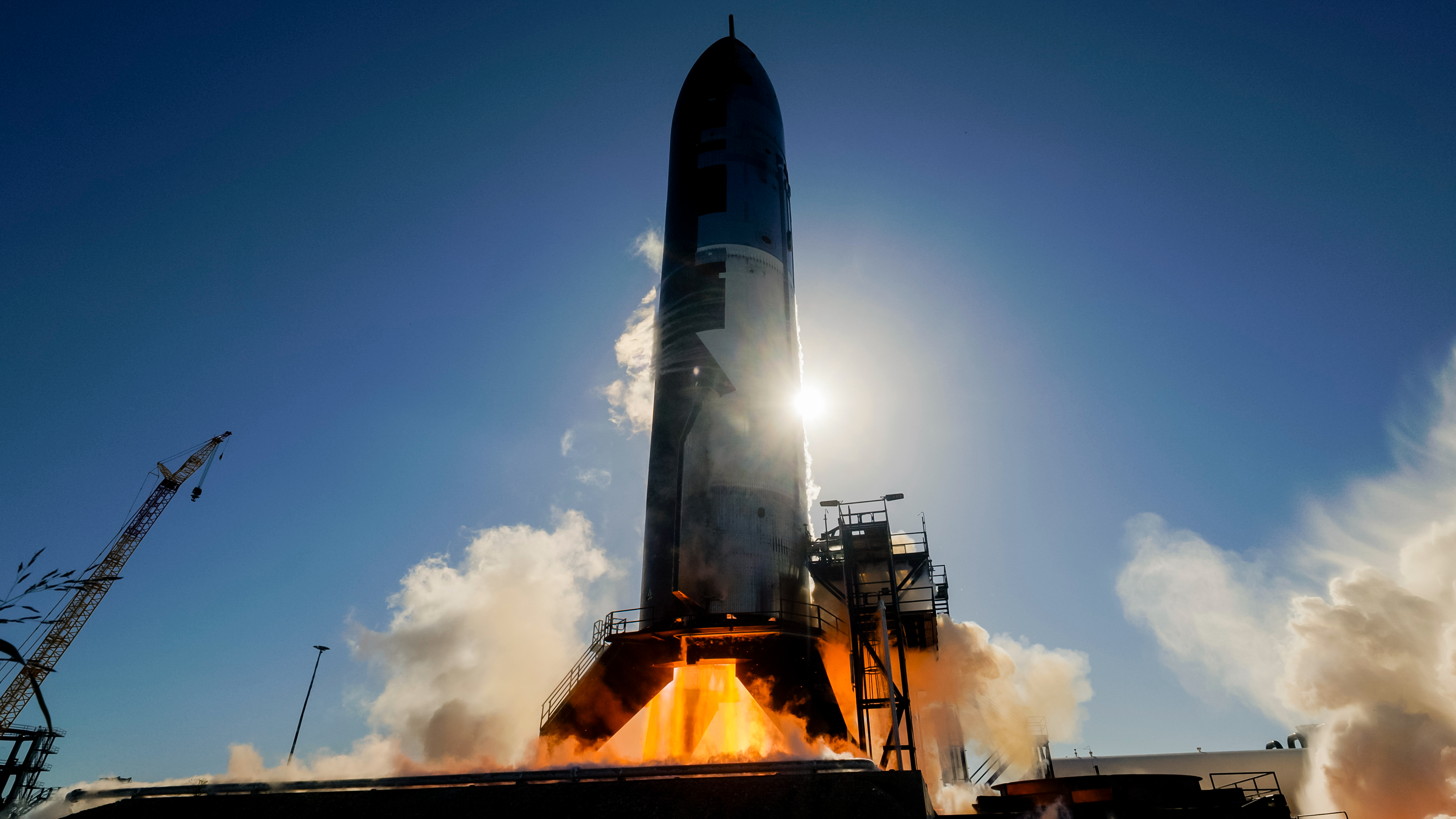Boudreaux -- (Space)man's Best Friend?

It seems that mankind has always sought the companionship of a faithful canine, particularly when venturing into unexplored lands. This is reflected in science fiction. In the British TV series Dr. Who one of the "companions" was a robot dog named K-9. In Ray Bradbury's novel Fahrenheit 451, the mechanical hound was a favorite companion of firemen. In Isaac Asimov's 1953 serial novel The Caves of Steel , scientists were promoting a culture called "C/Fe", in which humans and robots would be partners. "C" is for carbon and "Fe" is for iron, the basis for the biochemistry of humans and robots respectively.
NASA will continue this partnership, in the form of a robotic rover (sorry about that) like Spirit and Opportunity of Mars exploration fame -- Boudreaux, the robotic "dog" (Extra Vehicular Activity Robotic Assistant).
Recently put to the test in the Mars-like Utah desert, Boudreaux is programmed to follow astronauts on its own, planning a route for itself autonomously. It can carry tools, to reduce the burden on astronauts. It's stereovision cameras can relay pictures to a control center, making it the eyes of mission control.

"It's a lot of fun to watch when the test subjects realize how much the robot can do for them," Kim Tyree, a robotics engineer from NASA's Johnson Space Center in Houston, Texas, who works on the project told Nature magazine. Tyree also said that the test subjects -- spacesuit-clad geology graduate students --quickly adapted to the robot as if it were a true canine companion.
If you are interested in robotic dogs, don't miss DARPA's Big Dog, a companion for soldiers in the field that is intended to run on four legs (wheels don't do as well on uneven terrain). Thanks to Winchell Chung for the lead on this story.
Get the Space.com Newsletter
Breaking space news, the latest updates on rocket launches, skywatching events and more!
Join our Space Forums to keep talking space on the latest missions, night sky and more! And if you have a news tip, correction or comment, let us know at: community@space.com.
Bill Christensen is the founder and editor of Technovelgy, a website dedicated to cataloguing the inventions, technology and ideas of science fiction writers. Bill is a dedicated reader of science fiction with a passion about science and the history of ideas. For 10 years, he worked as writer creating technical documentation for large companies such as Ford, Unisys and Northern Telecom and currently works to found and maintain large websites. You can see Bill's latest project on Twitter.
